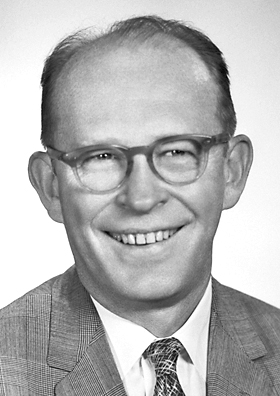SciTech Tuesday: Willard Libby

Willard Frank Libby. Image courtesy of the Nobel Foundation.
Today marks the birthday of Willard Libby, an American chemist who worked on the Manhattan Project and developed the method of radiocarbon dating. Following the Japanese attack on Pearl Harbor on December 7, 1941, Dr. Libby put his Guggenheim Fellowship on hold to work on the development of the atomic bomb. He left Princeton University for Columbia University where he assisted with the enrichment of uranium-235 using a process called gaseous diffusion separation.
At the end of the war, Libby served as a member of the U.S. Atomic Energy Commission and in 1960 he was awarded the Nobel Prize in Chemistry for his development of radioactive carbon-14 to determine the age of archeological artifacts. Known as radiocarbon dating, Libby’s technique revolutionized the field of archaeology by allowing researchers to determine the age of plant-based artifacts including wood, cloth, and parchment up to 45,000 years old.
Post by Annie Tête, STEM Education Coordinator




Leave a Reply